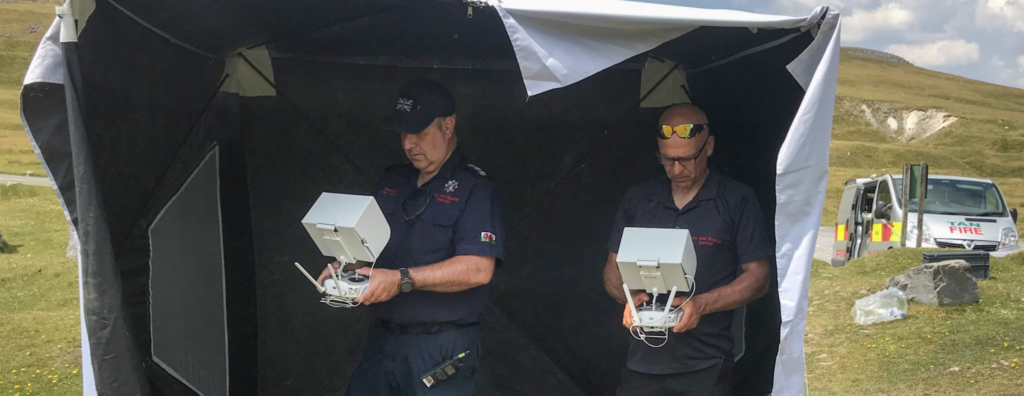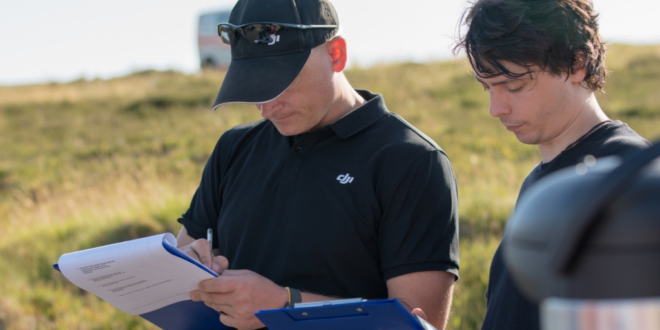Drones are increasingly being adopted by public safety teams and first responders. A study out this week from DJI, the European Emergency Number Association (EENA) and Irish research firm Black Channel, shows why that trend is set to continue.
And research like this is important. You’ll struggle to find an emergency service anywhere in the world – particularly in the sphere of Search and Rescue (SAR) – that’s flush with cash and able to allocate funds for new technologies without evidence of its efficacy.
Emergency teams can’t afford to misappropriate funds when lives are at stake. Which is why it’s so vital to back up claims that drones can help save lives with tests in the field that quantify their impact.
That was the aim of DJI, EENA and Black Channel’s Drone Efficacy Study: To conduct a rigorous assessment of the value
added by drones to the current standard practice used for SAR missions.
Read more: Drones for Good: Drones Saved Four People in One Day Last Week
Drone Efficacy in SAR Study: The Results
We all have an inkling that drones should be a valuable tool to SAR teams. Flying cameras can cover ground quickly, offer a persistent aerial perspective and keep emergency teams out of harm’s way. And that’s before you start using advanced payloads, such as thermal imaging cameras.
So it won’t come as a surprise to many that the Drone Efficacy Study found that SAR teams found simulated victims faster when they used drones for help.
The study goes on to conclude that drones offer enormous potential to help search and rescue (SAR) efforts, and that rescue squads need to develop new standards, tactics and protocols if they are to take full advantage of drones’ aerial perspective.
The study was released this week at EENA’s Drones & Public Safety Summit in Brussels. You can download it for yourself here.
Read more: EENA & DJI Celebrate Drone Search and Rescue in Iceland
Romeo Durscher, DJI’s director of public safety integration and co-author of the study, said “The potential for drones to save lives is clear – at least 160 people have been rescued by drones around the world – but the science of how to best use drones for public safety is still in its infancy.”
That’s will be the challenge moving forward for SAR teams, working out standardized procedures to get the full benefits of this technology.
“Unlike ground-based SAR, which has refined its methods for decades, there is no playbook for drone SAR. We’re excited to be among the first groups of researchers to start writing that playbook, because our work can help save more lives,” said Durscher.
Read more: DJI’s Durscher Emphasizes Drones Doing Good

There’s still work to do to integrate drones with SAR
To test the effectiveness of drone technology in lifelike SAR situations, the study sent randomly-selected teams of searchers to find simulated victims in rocky fields and cliff edges in Ireland and Wales.
Thirty teams used off-the-shelf drones with standard visual cameras, while another 20 teams searched on foot using traditional methods.
Seventeen ground search teams found their victims, compared to 23 drone teams. Percentage-wise, that means no-drone teams using standard search practice found the search target in 85% of the trials, while the drone-enabled teams found the target in 77% of the trials.
On the one hand, this shows that drone-assisted SAR protocols and procedures have not yet reached the point where the full benefits of the technology are being felt. On the other, it suggests there are perhaps inherent weaknesses in scouting for survivors from above.
Some of the barriers to success highlighted by the SAR teams using drones included persistent false positives, communication issues when the terrain became more challenging (ie a hill got in the way and degraded the video feed), inaccurate perceptions of the terrain based on the video feed and, of course, the well known annoyances of battery life and flight times.
However, the drone searchers did find their victims an average of 191 seconds faster, compared with the traditional SAR teams.
Overall it’s clear to see that the drone teams measured up well compared to their traditional counterparts, and that success rates (both in terms of locating survivors and the time it took to locate them) could be improved with a few tweaks.
Many of the challenges appeared to come from a lack of standard practice and experience using the technology. There are also a number of contextual headaches.
SAR teams need clear guidance on what combination of aircraft, sensor, software, training, and search process is optimal, for example. And the study concludes that more research is required to understand which gearset will work best for different search conditions.
That point is emphasized by Alfonso Zamarro, EENA Drones Activities Manager: “Searchers in the study said finding a victim with a drone was harder than they expected, which shows why it is vital for the SAR community to develop best standards for how to use drones,” he said.
“What patterns should drones fly? What altitude provides the best coverage? What sensors are best for spotting missing people? Which areas are best searched by ground forces, and which by drones? Answering these questions won’t be easy, but it will have a powerful impact.”
The general consensus is that improving drone technology is going to change the way SAR teams operate and help save countless lives in the future. But more work needs to be done to integrate them into operations and understand their strengths and weaknesses.
“Four years ago, drone technology was still so primitive that it showed little value in early studies. Today, even off-the-shelf drones are powerful enough to help SAR crews find victims faster than traditional search strategies,” said Gloria Crispino, CEO of Black Channel.
“We need to rigorously study how public safety agencies can best deploy their drones in conjunction with ground personnel, and how to ensure they communicate their findings to help bring every search to a fast, safe and successful conclusion.”
Malek Murison is a freelance writer and editor with a passion for tech trends and innovation. He handles product reviews, major releases and keeps an eye on the enthusiast market for DroneLife.
Email Malek
Twitter:@malekmurison
https://dronelife.com/2018/09/21/dji-eena-sar-drone-study-findings/
 Unmanned Aerial Vehicle The latest drone news
Unmanned Aerial Vehicle The latest drone news




